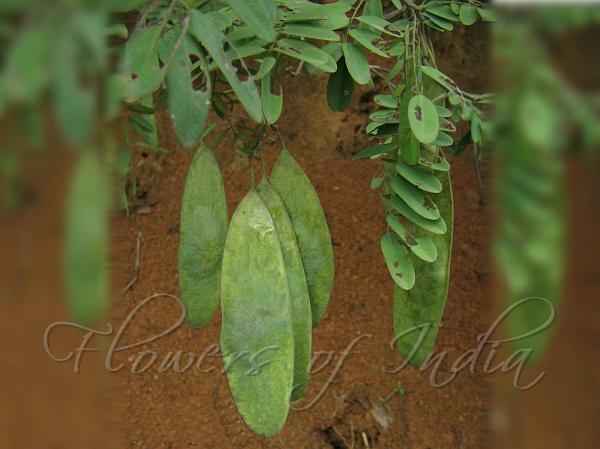|
| East Himalayan Dalbergia |
|

|

| File size | 104490 |
| Original date | 9/3/07 6:17 PM |
| Resolution | 1024 x 768 |
| Flash | Flash did not fire, auto |
| Focal length | 5.90625mm |
| Exposure time | 1/200s |
| Aperture | 3.8 |
| Focus Distance | 0.0m |
| Metering Mode | Spot |
| Camera make | Canon |
| Camera model | Canon PowerShot A400 |
| Sensor type | OneChipColorArea |
|
|
|
|
Photo: |
Botanical name: Dalbergia stipulacea Family: Fabaceae (Pea family)
Synonyms: Dalbergia penduliflora
Synonyms: Dalbergia penduliflora
East Himalayan Dalbergia is a large woody climber, sometimes small tree.
Bark is brown and the branches are spreading. Leaves are 15-20 cm long,
compound. Stipules are ovate-lanceolate to lanceolate, membranous, falling
off early. Leaflets are 17-21, with stalks 1.5-2 mm long. They are oblong
to obovate-oblong, 2.8-3.5 × 1-1.2 cm, lowest sometimes elliptic, 1.2-1.5
× 1 cm, thinly papery. Base is broadly wedge-shaped or rounded, tip
pointed sometimes blunt or notched. Flowers are borne in panicles in leaf
axils. Stalk, rachis, branches, and bracts are covered with brown velvety
hairs. Lower part of inflorescence has many scattered, ovate, membranous,
empty bracts. Bracts of flowers are smaller than inflorescence bracts.
Bracteoles are obovate, enclosing 2/3 of sepal cup. Sepal cup is
bell-shaped, bristly, with ovate teeth. Flowers are pale blue or pale
purplish red. Petals are distinctly clawed. Standard petal is circular,
slightly notched; wings with downward ears on upper side below. Stamens
are 10. Pod is broadly ovoid or elliptic, 9-11 × 3.2 cm, firmly leathery,
hairless, 1-seeded, very rarely 2-seeded. Seeds are kidney-shaped 15 × 8
mm. East Himalayan Dalbergia is found at altitudes of 200-1300 m in the
Himalayas, Nepal to Bhutan, NE India, SE Asia, China, and Malaysia.
Bark and stem use as fish poison. Flowering: April-May.
| Identification credit: R. Vijayasankar | Photographed in Manipur. |
• Is this flower misidentified? If yes,